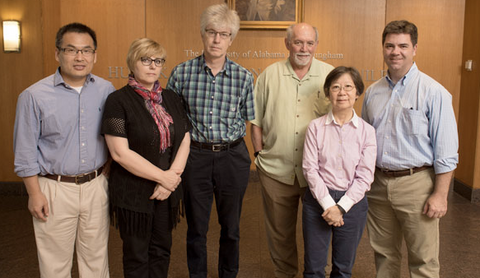TriAltus’ Origin Story
An Unfulfilled Need
In 2013, crystallographer and Professor at the University of Alabama Birmingham (UAB) Dmitry Vassylyev was in the midst of purifying proteins for crystallography studies. His research required ultra-high purity protein in its native form to generate protein crystals. However, no single affinity chromatography system existed that could give him the desired ultra-high purity, tag-free protein with reasonable yield in a short amount of time. Every system had a flaw: sensitivity to high salt buffers, lack of tag removal, low resin binding capacity and reusability, or high cost.
A New Solution
Instead of combining existing methods, Vassylyev designed a new one. Colicin DNases (CE2, CE7, CE8, CE9), a family of toxic proteins in bacteria, possess a naturally high binding affinity to their inhibitors, the Ims. By inactivating the DNase activity of CE7, the CE7 variant CL7 is no longer toxic to cells and maintains its binding affinity to its partner Im7. In the CL7/Im7 system, CL7 serves as the tag on the protein of interest and Im7 serves as the ligand immobilized to affinity resin. A paper was published about this novel system in 2017 in PNAS.
System Features
The naturally ultra-high affinity between CL7 and Im7 solved the high-salt sensitivity problem posed by other purification systems. High salt loading buffers can be used without disrupting the CL7/Im7 binding affinity, allowing impurities to be removed more easily. This prevents the need for multiple purification runs over the Im7 chromatography column, saving time and reagent costs. 97-100% purity can now be achieved in just one chromatography step.
Another standout feature of the CL7/Im7 system that Dr. Vassylyev included was the ability to elute protein using a protease. PreScission and SUMO protease cleavage sites are engineered into the CL7-tagged plasmids to allow for removal of the protein from the Im7-bound column. The vectors also offer flexibility in engineering other protease sites such as TEV and other tags as desired.
Product Improvements
Improvements to CL7/Im7 products continue to bolster its advantages over other systems. Within the past year, the Im7 resin’s binding capacity has been increased to 35-40 mg/mL, making it one of the highest capacities available on the market. The resin is also reusable upwards of 100 times, driving the cost per use down drastically.
Purification Successes
Since its inception, the CL7/Im7 system has been used to solve the protein purification issues for many difficult protein types. Multi-subunit proteins like ttRNAP and mtRNAP, helicases, Cas proteins, and membrane proteins such as YidC and calnexin have all been successfully purified using CL7/Im7. Most recently, researchers at Earl Chiles Institute in Oregon have been using CL7/Im7 to purify the coronavirus S-protein in studies for its use in a vaccine.
Years of research and development have gone into creating, improving, and scaling CL7/Im7 products. What ties TriAltus’ work together is our desire to help scientists overcome challenges in their protein-related research. Our goal is to help solve our customers’ problems: helping a newcomer to the field get started, a grad student make the switch from His-trap for his lab, or a researcher finally purify a difficult protein. We’re excited to keep growing and improving our products and services in order to make protein purification troubles a thing of the past.

